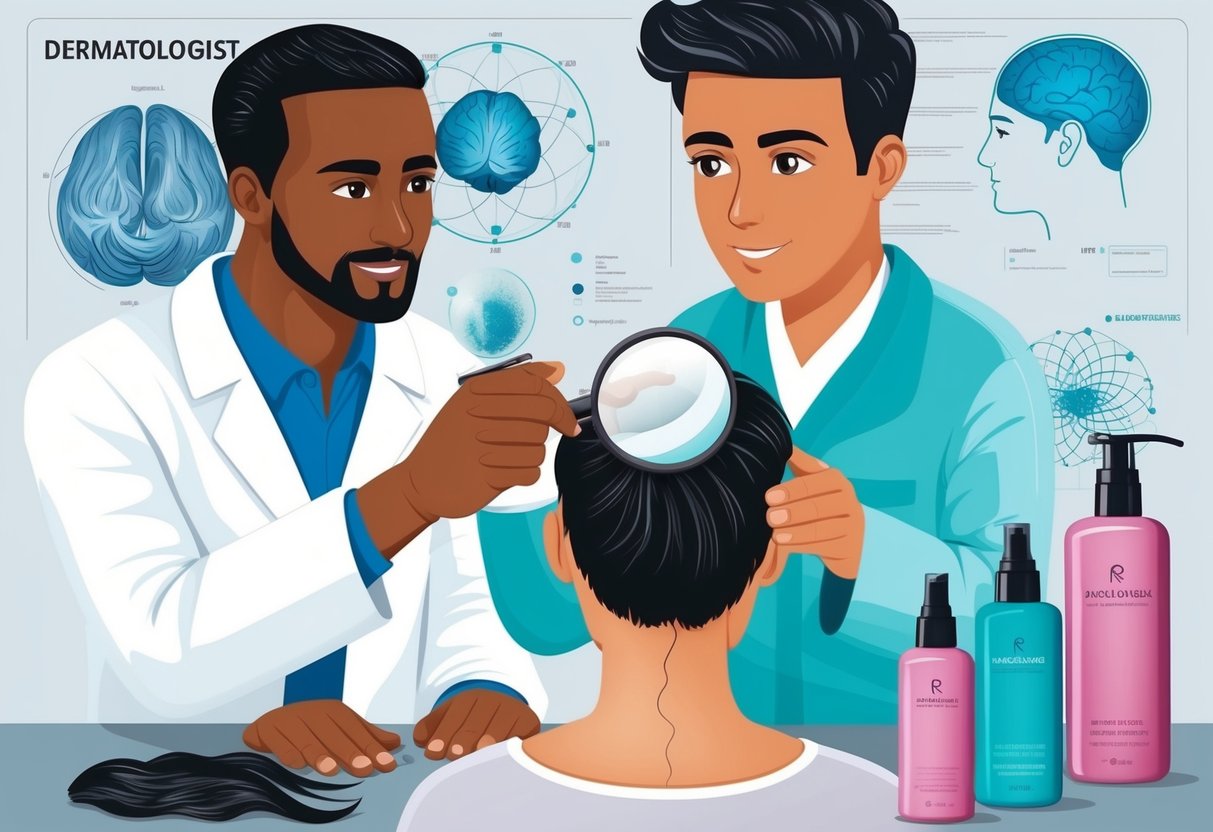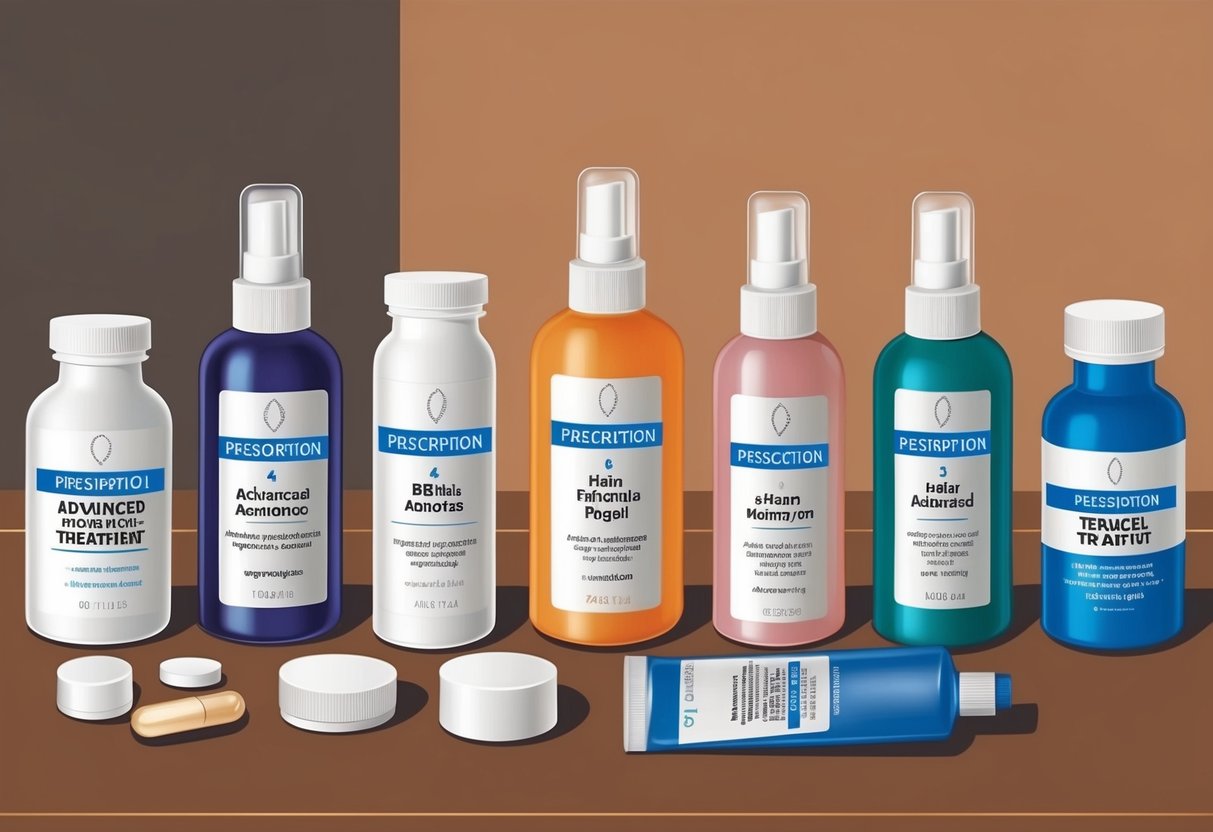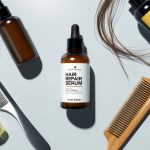How to Fix Thinning Hair: Science-Backed Solutions for Thicker, Fuller Hair
Expert Diagnosis: When to See a Dermatologist

Thinning hair can have many causes, some of which are not visible on the surface. An expert evaluation helps target the specific reason for hair thinning and offers effective solutions for long-term results.
Assessing Underlying Health Conditions
A dermatologist plays an essential role in evaluating medical conditions that contribute to hair thinning. Common triggers include hormonal imbalances, thyroid disorders, anemia, nutritional deficiencies, and autoimmune diseases.
By taking a thorough medical history and performing physical exams, dermatologists can spot warning signs that may indicate a more serious issue. For women, underlying factors such as polycystic ovary syndrome (PCOS) or iron deficiency often go unnoticed but can lead to ongoing hair thinning if left unaddressed.
In many cases, additional tests like blood work are recommended to check for these hidden health problems. Early intervention guided by a dermatologist helps identify whether hair thinning is temporary or may become chronic.
This tailored approach can increase the success rate of hair regrowth and prevent unnecessary treatments. For more details about diagnostic steps, visit this hair loss diagnosis guide.
Personalized Hair Loss Treatment Plans
After diagnosis, dermatologists create a personalized strategy based on the cause, hair type, and pattern of loss. Treatments may include topical medications like minoxidil, oral medications such as spironolactone for women, or procedures like platelet-rich plasma (PRP) therapy and microneedling.
In some instances, dietary adjustments or supplements are also recommended. Instead of taking a one-size-fits-all approach, a dermatologist closely monitors progress and adjusts the treatment plan as needed.
Follow-up appointments help track effectiveness and limit side effects. This individualized attention can slow advancing hair thinning and support thicker, fuller hair over time.
For current treatment options and the importance of expert support, see this hair loss treatment resource.
Topical Solutions for Thicker, Fuller Hair
Topical treatments such as medicated foams and botanical oils are widely used in hair care for thinning hair. Active ingredients can address hair loss by stimulating hair follicles, reducing breakage, and supporting scalp health.
How Minoxidil Supports Hair Regrowth
Minoxidil is an FDA-approved over-the-counter treatment for both men and women dealing with thinning hair. This topical solution is available as a foam or liquid and is applied directly to the scalp.
Clinical trials have shown that regular use of minoxidil can help stop hair loss and promote regrowth by increasing blood flow to hair follicles. Results are most noticeable after several months of consistent use.
Users often see new hair growth in areas of thinning, although the degree of improvement varies between individuals. Side effects such as scalp irritation or unwanted facial hair may occur, but these are generally mild.
Minoxidil remains a primary recommendation from dermatologists for androgenetic alopecia and other common forms of hair thinning. To maximize effects, individuals should apply the product as directed without skipping applications.
More details on its effectiveness are found in this Harvard Health resource.
Benefits of Rosemary Oil for the Scalp
Rosemary oil is a natural essential oil frequently discussed in hair care routines for its potential to support scalp health and hair thickness. Several studies suggest rosemary oil may improve circulation in the scalp, create a healthier environment for hair follicles, and reduce inflammation.
This oil can be massaged into the scalp—often diluted with a carrier oil—to help moisturize, promote relaxation, and possibly slow hair thinning. While evidence is not as robust as with minoxidil, many users report improved shine and manageability.
For individuals seeking a chemical-free alternative, rosemary oil offers a gentler option. Combining rosemary oil with other healthy practices, such as a balanced diet and reduced heat styling, can further enhance hair appearance.
Choosing oils from reputable sources ensures higher quality and safety for regular scalp application. Learn more about natural methods that support hair thickness at this Medical News Today article.
Prescription Medications and Advanced Treatments

Several prescription options target hair thinning by addressing hormone levels and specific biological mechanisms. Some treatments are taken orally and others topically, each with distinct advantages depending on individual needs and causes of hair loss.
Finasteride: Mechanism and Effectiveness
Finasteride is a prescription medication often used to slow or stop male pattern baldness. It works by inhibiting the enzyme 5-alpha reductase, which converts testosterone into dihydrotestosterone (DHT), a hormone linked to follicle shrinkage and hair loss.
Clinical trials demonstrate that daily oral finasteride can help reduce DHT levels in the scalp by as much as 60%. Many patients observe a decrease in hair shedding and some even notice new hair growth after several months of use.
Finasteride is most effective in men with mild to moderate hair loss and is less frequently prescribed for women due to hormonal side effects.
Most common side effects include:
- Reduced libido
- Erectile dysfunction
- Breast tenderness or enlargement
Users should continue treatment to sustain results, as discontinuation often leads to renewed hair loss. The medication requires a prescription and regular follow-up with a healthcare provider to monitor response and side effects.



